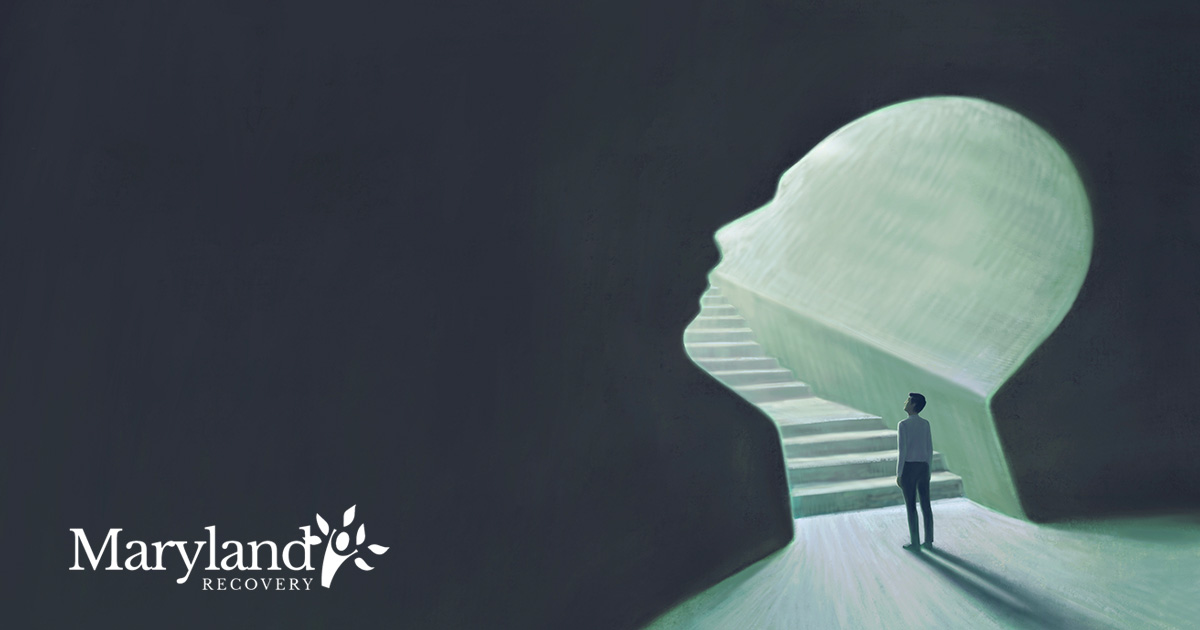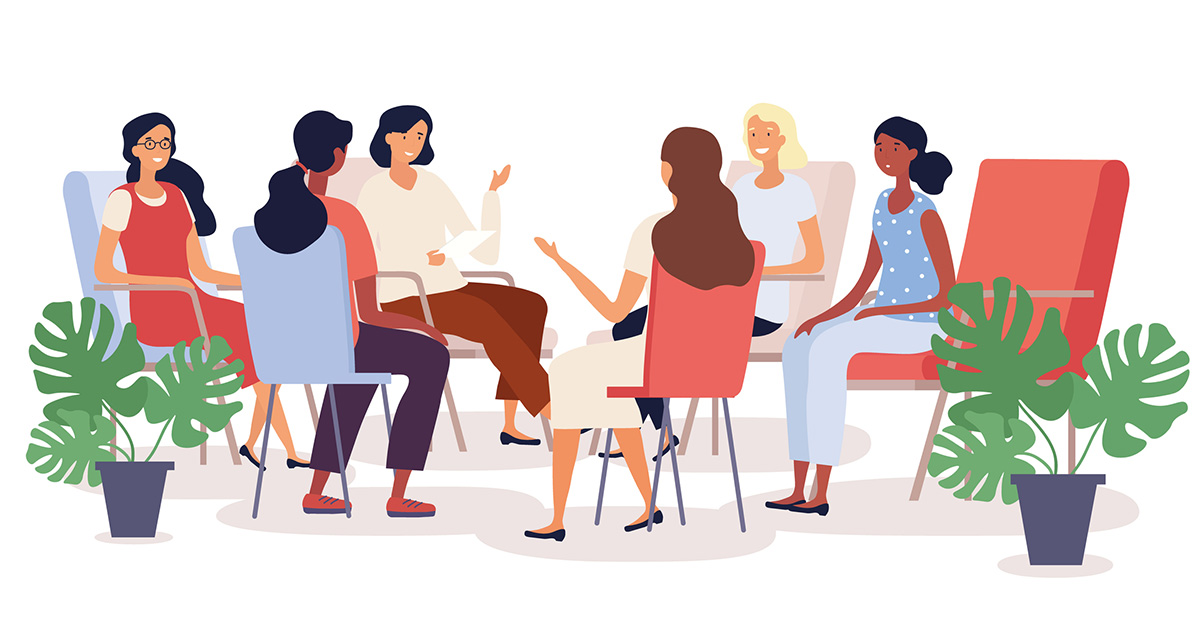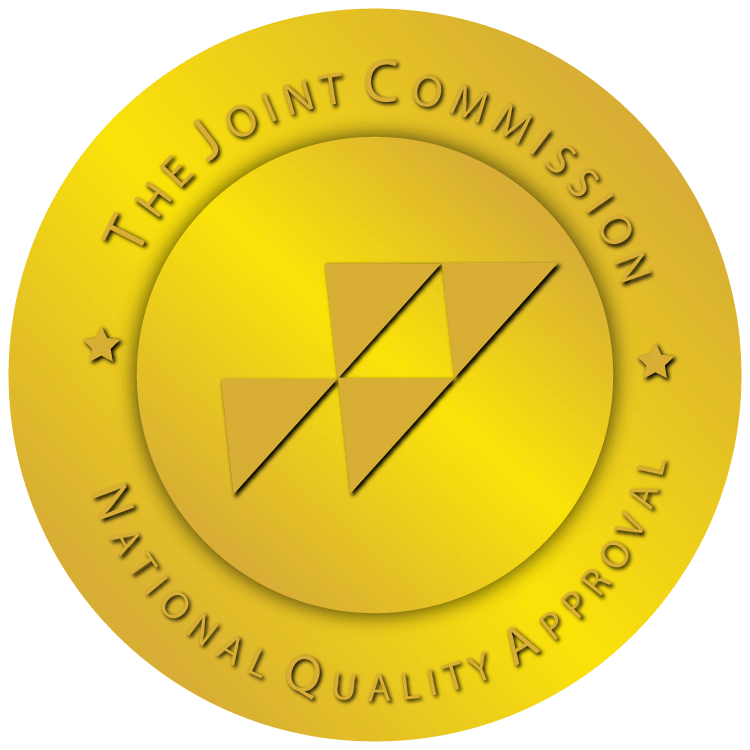
Living with addiction is incredibly challenging, and can take a toll on both the individual and their family. Though there are many different methods and mindsets for achieving sobriety, many people struggle to find what works for them. Failed attempts can make an individual feel hopeless and frustrated, and can ultimately make the situation worse.
However, when it comes to substance abuse recovery, the 12-step program stands the test of time. For almost 100 years, people with addiction have used 12-step programs to improve their lives and overcome substance use or addictive tendencies.[1]Donovan DM, Ingalsbe MH, Benbow J, Daley DC. (2013)12-step interventions and mutual support programs for substance use disorders: an overview. Soc Work Public Health, 28(3-4). 313-32. Millions of lives have improved as a result of 12-step programs, and as the years go on, more and more 12-step programs have emerged as an alternative to AA.
The 12-step system includes frequent weekly meetings, to help patients receive the help and support that they need for true, lasting sobriety. At Maryland Recovery, we continue to support this practice because it is effective for many—and because we believe that millions more lives can be improved with attention to the 12 steps.
The 12-Step System: A History
Originating in the middle of the 1930s, the 12-step system looks at addiction differently than many other methods. While some recovery tactics look at the symptoms of addiction, the 12-step system does not treat addiction as a disease that can be cured easily via access to the right medical provider. Instead, this ideology suggests that individuals who experience addiction will always experience addiction. However, with the right support and mindset, 12-step programs aim to help attendees ensure that their addiction does not take over their lives. In doing so, there is value to be found, both in the acceptance of oneself as well as in several tools for maintaining sobriety.
The idea of 12 steps to addiction recovery began with the publication, “Alcoholics Anonymous: The Story of How Many Thousands of Men and Women Have Recovered from Alcoholism.” This was the first publication to outline the steps, and bring this new perspective on addiction to light. The “Big Book,” as it is commonly referred to in AA circles as well as in many other 12-step-adjacent programs, has since shifted from a purpose of bringing awareness of a new methodology to the public to serving as a primary text for many 12-step programs. As a result, the book is available in over 70 languages.
Since then, the driving thoughts behind this method have been supported by science. For example, we now understand that addiction can have a genetic component[2]Hatoum, A.S., Johnson, E.C., Colbert, S.M.C. et al. (2021). The addiction risk factor: A unitary genetic vulnerability characterizes substance use disorders and their associations with common … Continue reading meaning that addiction as a whole is not always a failing on the part of the individual. Just like any disease, addiction can happen for reasons largely outside of human control, a key theory behind the development of the 12-step progression.
The 12-Step Progression

There are many different variations of the twelve-step program. Since the birth of Alcoholics Anonymous, various programs have evolved based on similar steps. At Maryland Recovery, we believe individuals can find a great deal of value in attending 12-step meetings, and the variety of programs available today have increased accessibility and effectiveness for all.
There are seven basic ideas at the foundation of the 12-step progression, components which can be found in nearly any 12-step group.
Idea 1: You Must Admit Powerlessness Against Addiction
Step 1 asserts that addiction is not in itself a disease to be cured. Rather, it is a condition that must be managed. However, to begin doing so, you must become honest with yourself—you have proven yourself powerless to face addiction on your own.
Idea 2: You Must Turn Your Life Over to a Higher Power
While not every part of your recovery journey will be positive, it is crucial to find hope that a higher power can help you ensure addiction will not continue to be the driving force in your life. Though the concept in steps 2 and 3 was developed with a Christian mindset, both AA and Maryland Recovery believe that any sense of spirituality is beneficial to establishing hope in this step.
Idea 3: Take a Reflective Moral Inventory
Step 4 encourages participants to perform a comprehensive moral inventory so you can begin leaving your failings in the past. Assess what your morals are, what you want them to be, and how you’ve strayed from them.
Idea 4: Admit What You’ve Done Wrong and Make Amends
You need to admit your mistakes to yourself, to your higher power, and to those around you during step 5. Humans make mistakes; there is no shame in this.
Idea 5: You Must Develop the Humility and Willingness Necessary to Move Past Wrongs
Connect with your higher power or spirituality, and ask that your shortcomings and poor character traits be removed for this new phase of your life. In steps 6 and 7, you must become humble enough to admit you need help moving past these issues, and be willing to move forward.
Idea 6: It Is Important to Apologize and Continue to Take Personal Inventory
While the previous steps involve admitting your shortcomings to your spiritual power, steps 8, 9, and 10 involve apologizing and making amends to the people you have harmed. Then, to continue in recovery, you should continue to take a personal inventory throughout your lifetime.
Idea 7: Move Forward and Help Others With the Previous Ideas in Mind
Steps 11 and 12 involve maintaining long-term recovery. When you’ve had a spiritual awakening and feel confident in the changes you’ve made, help others who are just beginning their journey to sobriety. Maintain your connectedness with your higher power throughout your life.
The 12 steps serve to make the recovery process more palatable and to give you objectives and goals to reach. This makes the process more focused and allows you to rely on a “to do” list, rather than aimlessly heading toward sobriety. Having a plan is key, and we believe that 12-step groups can help provide structure when you need it most.
12 Step Benefits

Everyone who goes through a 12-step program has a different story and is at a different stage in their journey. No experience is more correct than another. It simply means that your experience will be unique, and the personal benefits you experience will be different than someone else’s.
There are standard benefits that come with following a 12-step program. Though your benefits may vary, it’s important to know that the 12-step programs we encourage at Maryland Recovery can offer:
- Increased self-control
- More genuine social interaction
- Honesty
- Structure and direction to your days, weeks, and overall life
- Repaired relationships
- Accountability
- Stronger willpower
- Balance
- Health and vitality
- Reduced likelihood of relapse
- Strengthened faith in a higher power
- Passion for the greater good
Ultimately, your journey is what you make of it. If you commit to the 12 steps and are passionate about improving yourself, you’re likely to encounter a variety of benefits.
Is There a Non-Religious AA?
The original 12-step program was a deeply Christian idea. This process used the Christian belief in God to inform the spiritual portion of the program. However, modern programs are not so monotheistic. Many programs, including ours, use the term “higher power” in place of God. This allows each participant to put their own beliefs into action.
However, it’s important to note that 12-step programs are spiritual. You do not have to adhere to organized religion, but you should be prepared to participate in a spiritual practice, whatever that means to you. You can choose from a myriad of different spiritual ideologies to fit that criterion.
Belief in something bigger than yourself is key to recovery via a 12-step program.[3]Sussman, S., Reynaud, M., Aubin, H. J., & Leventhal, A. M. (2011). Drug addiction, love, and the higher power. Evaluation & the health professions, 34(3), 362–370..If you are focused only on yourself, it is difficult to claw your way out from the clutches of addiction. 12-step programs highlight just how crucial it is to let go of the belief that you can “stop your addiction at any time.” Surrendering to your own idea of a spiritual force in your own life is key to relinquishing this control.
A simple belief that there is a greater order of things and an interconnectedness to our world has helped many individuals begin to navigate recovery successfully.
Can 12-Step Programs Work for Adolescents?
Alcohol and drug treatment programs can be difficult for adolescents. Fortunately, studies show that 12-step programs are highly effective for this age group.[4]Nash, A. J. (2020). The Twelve Steps and Adolescent Recovery: A Concise Review. Substance Abuse: Research and Treatment, (14). During this formational time, adolescents frequently respond to the ideologies foundational in our program. This not only helps them achieve sobriety, but it can also help them to create a healthier future for themselves.
It’s never too early nor too late to begin the 12-step process. If you or someone you love is an adolescent and is struggling with substance abuse, our programs may be able to help.
What Can I Do Instead of AA?
All applications of the 12-step process are slightly different, but focus on the ideals listed above. Groups that exist outside of AA’s footprint often cater to certain groups, or individuals who share unique traits. For example, these groups may focus on people with certain mental health conditions, people experiencing compulsive or addictive behaviors, people experiencing certain relationship trauma, and even family members of all of these individuals. Other groups utilize the 12 steps in part, or simply use the overarching ideals to create a unique approach that fits their own purpose.
Here at Maryland Recovery, the driving force behind our treatment philosophy is the individual. We know that each of the people who come through our door is an individual with unique experiences and circumstances. We don’t believe in a “one size fits all” plan for recovery; what works for one person will not necessarily work for others.[5]Kuhlemeier, A., Desai, Y., Tonigan, A., Witkiewitz, K., Jaki, T., Hsiao, Y.-Y., Chang, C., & Van Horn, M. L. (2021). Applying methods for personalized medicine to the treatment of alcohol use … Continue reading
As such, we tailor our treatment plans to your situation, which means we will assess your needs and decide the best course of action for your treatment. While we do encourage participation in 12-step programs, the area offers many different alternatives to AA. We can help you determine the option that will be most effective in your situation. We are committed to providing support for those who want it, regardless of your beliefs.
To receive the full benefit of our program, we encourage you to make it your own. Though you will attend meetings and discussions, we encourage all our patients to connect with the curriculum on a personal level. This may begin with applying your personal interpretation of “higher power” to the spiritual components. It may also require you to think of creative ways to make amends. Whatever your situation may be, we want to make sure that you connect with each step and execute it as you see fit. This will help the effects to last and empower you to take control far into the future.
What Types of Support Groups Exist That Are Not Based on 12 Steps?

The following are all wonderful options for those who need alternative options for ongoing support:
- Celebrate Recovery
- SMART Recovery
- Refuge Recovery
- Women for Sobriety
- Secular Organizations for Sobriety
Is There Something Better Than AA?
We have a full-service outpatient facility where we provide care on our patients’ schedules. Many of our clients work or attend school, so we tailor our programs to the individual’s schedule and needs. We offer holistic treatment, alongside group counseling, individual counseling, yoga, and many other alternative therapies.
The 12-step program is incredibly effective for many of our patients, but it’s never the whole picture. Long-term sobriety requires more resources than what a 12-step program can provide alone. Our aim is to provide our patients with effective tools to combat addiction in the long term. By teaching skills and alternative methods for maintaining sobriety, we are able to help you find lasting recovery.
Learn more about how we utilize the 12 steps to recovery in our program or call anytime to speak with us and discuss how we can design a treatment plan that works for your specific needs.
Reviewed by Christopher Schwartfigure MS, LGPC, CAC-AD
References
| ↑1 | Donovan DM, Ingalsbe MH, Benbow J, Daley DC. (2013)12-step interventions and mutual support programs for substance use disorders: an overview. Soc Work Public Health, 28(3-4). 313-32. |
|---|---|
| ↑2 | Hatoum, A.S., Johnson, E.C., Colbert, S.M.C. et al. (2021). The addiction risk factor: A unitary genetic vulnerability characterizes substance use disorders and their associations with common correlates. Neuropsychopharmacology. |
| ↑3 | Sussman, S., Reynaud, M., Aubin, H. J., & Leventhal, A. M. (2011). Drug addiction, love, and the higher power. Evaluation & the health professions, 34(3), 362–370. |
| ↑4 | Nash, A. J. (2020). The Twelve Steps and Adolescent Recovery: A Concise Review. Substance Abuse: Research and Treatment, (14). |
| ↑5 | Kuhlemeier, A., Desai, Y., Tonigan, A., Witkiewitz, K., Jaki, T., Hsiao, Y.-Y., Chang, C., & Van Horn, M. L. (2021). Applying methods for personalized medicine to the treatment of alcohol use disorder. Journal of Consulting and Clinical Psychology, 89(4), 288–300. |








